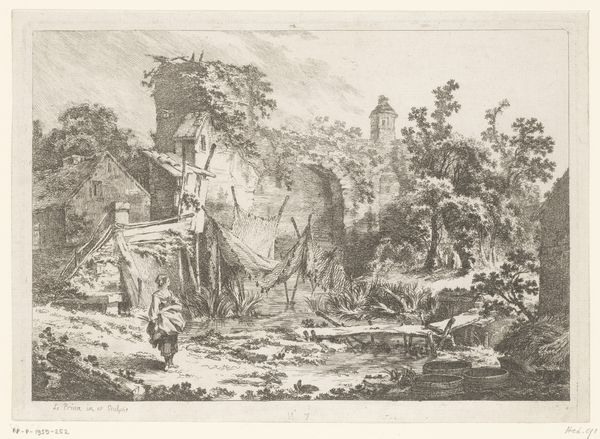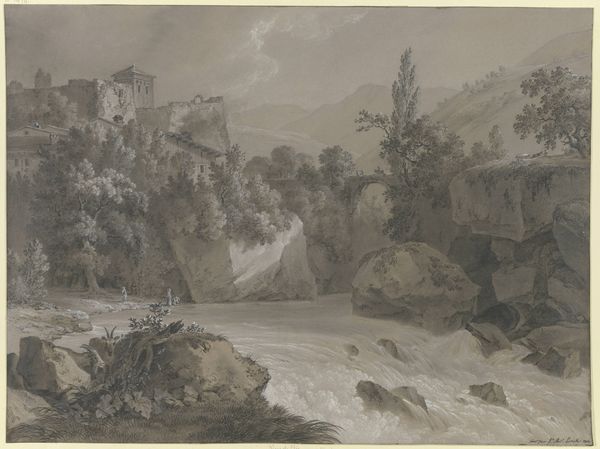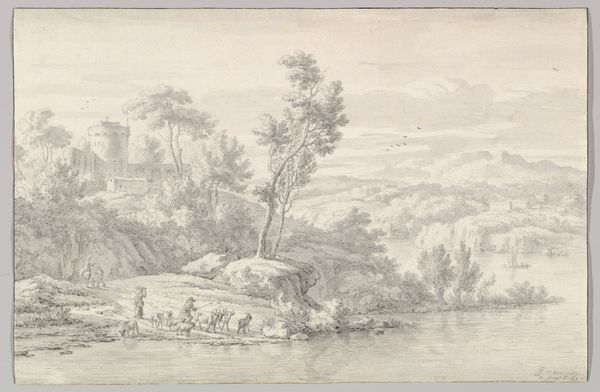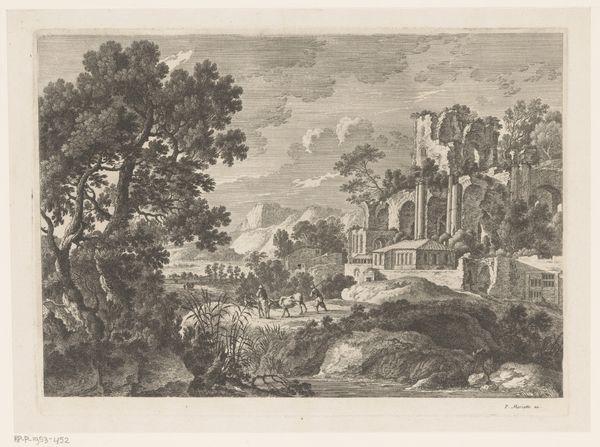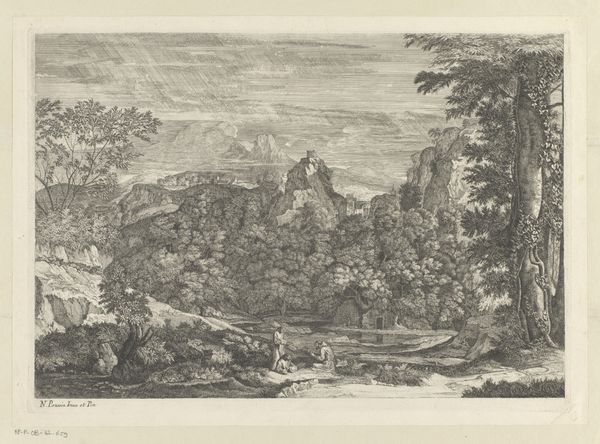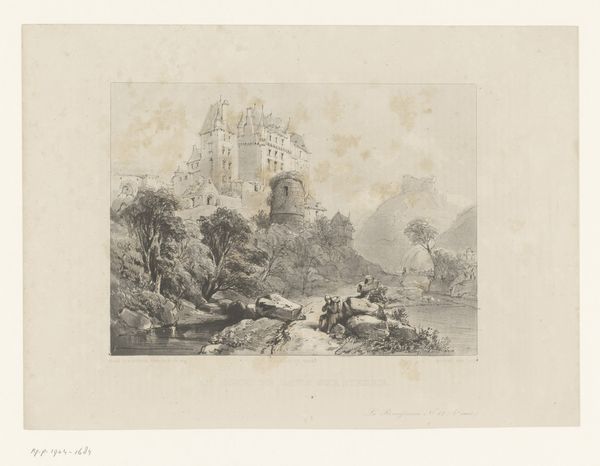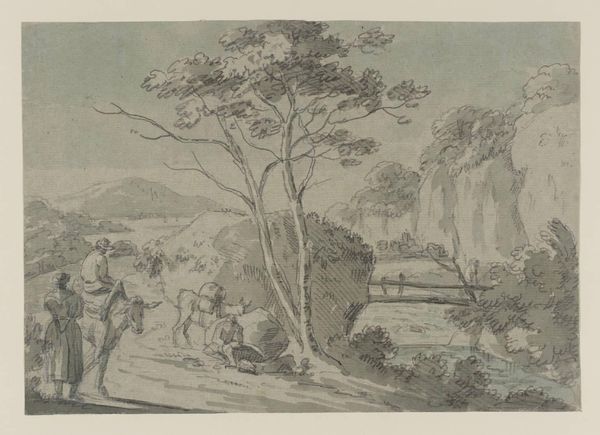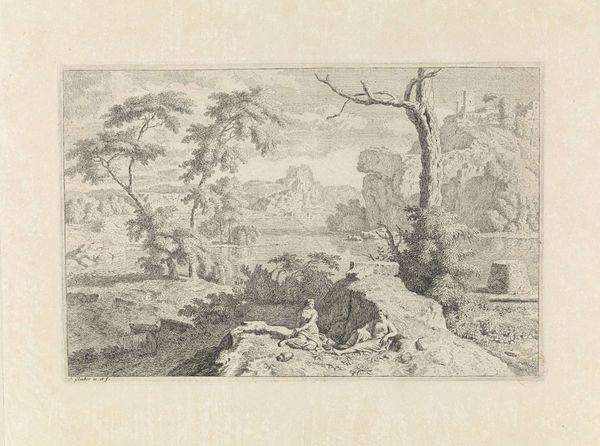
Dimensions: support: 245 x 343 mm
Copyright: CC-BY-NC-ND 4.0 DEED, Photo: Tate
Curator: Thomas Sunderland gives us his "Spoletto after Vernet." It's an ink and watercolor work that captures a really specific mood, doesn't it? Editor: It does. A quiet, almost melancholy feeling pervades this scene. The crumbling architecture, the muted colors... It speaks to the transience of everything. Curator: Exactly! The ruins themselves are symbolic, standing for the rise and fall of empires, right? Like an echo of past grandeur. And those figures in the foreground, almost oblivious... Editor: They ground the piece, showing the continuation of everyday life amidst historical decay. Dogs, fishing, small talk, while this massive ruin looms above—a potent reminder of time's passage. Curator: There's also the subtle interplay between nature and civilization. The wildness of the waterfall versus the geometrical architecture... they mirror each other. Editor: Yes, and the light. It softens the scene, but also highlights the contrast between the enduring natural world and the fragile works of man. I keep coming back to that waterfall. Curator: Sunderland’s version, though, has a distinct character. You feel the subtle melancholy, a romantic's sigh for a bygone era. Editor: I see it now. It's not just a landscape; it's a meditation. I love that.



